Awareness On BCP For Dreamers & Decision Makers
- Definition of Business Continuity Plan (BCP)
- Importance of BCP for resilience and minimizing disruptions
- Key components: risk assessment, impact analysis, recovery strategies, communication plans
- Identifying potential risks: cyber threats, natural disasters, financial crises, supply chain disruptions
- Business Impact Analysis (BIA) for assessing operational risks
- Legal and compliance requirements related to BCP
- Leadership’s role in driving and supporting BCP
- Employee involvement in business continuity efforts
- Crisis communication for effective response during disruptions
- Developing response and recovery strategies for quick resumption of operations
- Testing and mock preparations to ensure plan effectiveness
- Technology and data protection: backups, cybersecurity, remote work contingencies
- Building a culture of preparedness within the organization
- Adapting BCP to evolving threats and business changes
- Continual improvement through post-incident reviews and ongoing training
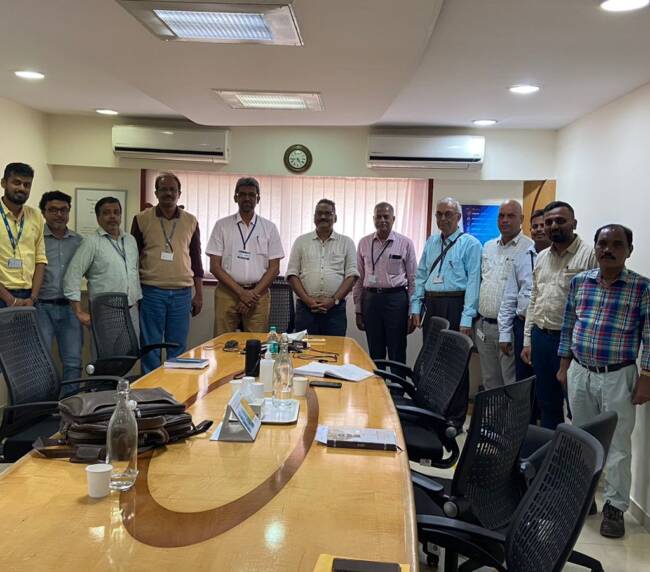
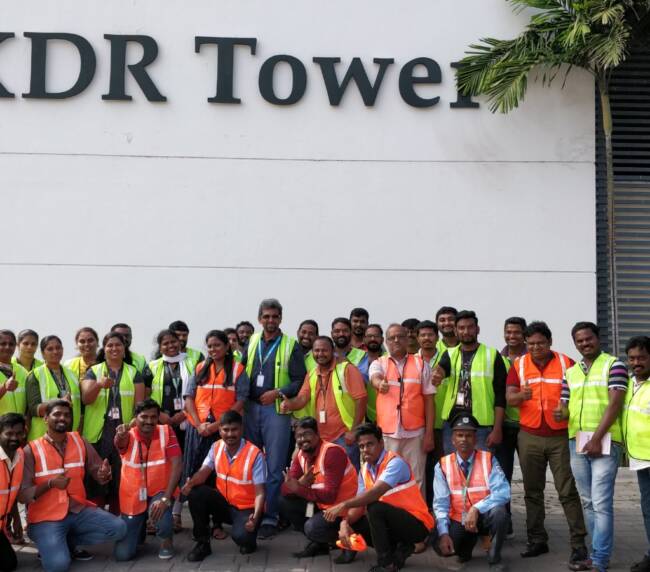
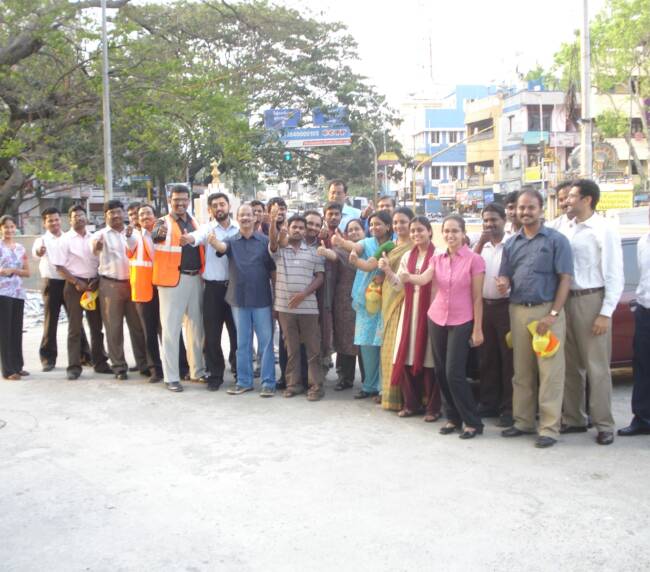

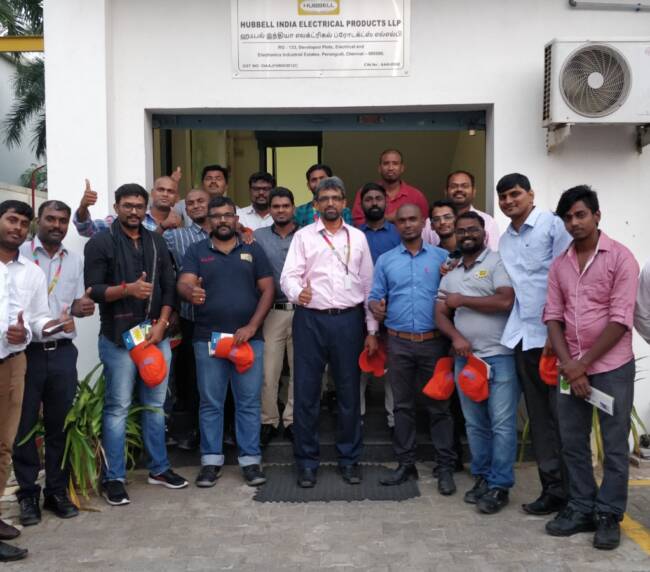

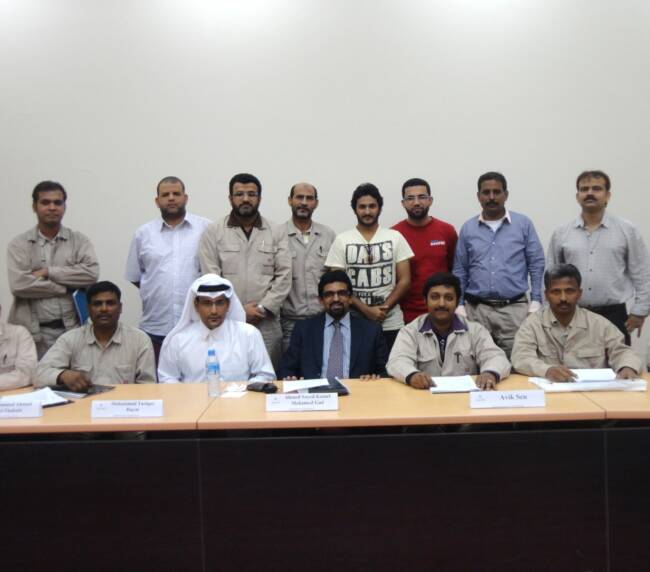
Fostering Safety Culture for Organisation’s Development











- Understanding Safety Culture
- Leadership Commitment
- Employee Engagement
- Risk Identification & Management
- Effective Safety Communication
- Training & Continual Learning
- Behavior-Based Safety
- Incident Investigation & Learning
- Integrating Safety with Business Goals
- Sustaining a Proactive Safety Culture
- Workplace Hazard Control Measures
- Safety Audits & Compliance
- Emergency Preparedness & Response
- Psychological Safety & Mental Well-being
- Measuring & Improving Safety Performance
Defensive Driving & Road Safety
- Introduction to Defensive Driving
- Importance of Road Safety
- Common Causes of Road Accidents
- Vehicle Inspection & Maintenance
- Safe Following Distance & Speed Control
- Hazard Perception & Risk Awareness
- Managing Adverse Weather & Road Conditions
- Dealing with Aggressive & Distracted Drivers
- Emergency Manoeuvres & Accident Prevention
- Laws, Regulations & Traffic Signs
- Use of Seatbelts & Safety Equipment
- Handling Fatigue & Driver Wellness
- Safe Driving Practices for Different Vehicles
- Eco-Friendly & Fuel-Efficient Driving Techniques
- Defensive Driving Testing & Certification









Fire & Life Safety





- Introduction to Fire and Life Safety
- Understanding the Fire Triangle: Heat, Fuel, and Oxygen
- Common Causes of Workplace Fires
- Fire Prevention Strategies and Best Practices
- Types of Fire and Classification
- Fire Detection and Alarm Systems: How They Work
- Fire Extinguishers: Types, Usage, and Maintenance
- Emergency Evacuation Procedures and Assembly Points
- Importance of Fire Drills and Emergency Response Training
- Role of Fire Wardens and Emergency Response Teams
- Smoke and Toxic Fumes: Risks and Safety Measures
- Safe Handling and Storage of Flammable Materials
- First Aid for Fire-Related Injuries (Burns, Smoke Inhalation)
- Legal and Regulatory Compliance in Fire Safety
- Building a Fire-Safe Culture in the Workplace
Advance Fire Safety
- Overview of Advanced Fire Safety Systems
- Understanding Fire Hydrant Systems: Components and Functionality
- Types of Fire Hydrants: Wet Riser vs. Dry Riser Systems
- Fire Detection Systems: Smoke, Heat, and Flame Detectors
- Fire Alarm Systems: Manual Call Points, Addressable vs. Conventional Panels
- Working of Automatic Sprinkler Systems and Activation Mechanism
- Types of Sprinkler Heads and Their Applications
- Water Mist and Deluge Systems: Advanced Fire Suppression Methods
- Fire Pump System: Jockey, Main, and Standby Pumps
- Pre-Action and Foam-Based Fire Suppression Systems
- Gas-Based Fire Suppression: FM-200, CO₂, and Inert Gas Systems
- Importance of Fire Water Tanks and Storage Requirements
- Testing, Maintenance, and Inspection of Fire Protection Systems
- Dry & wet drill under controlled atmosphere
- Role of Building Fire Safety Plans and Compliance Standards
- Emergency Response and Coordination with Fire Safety Systems

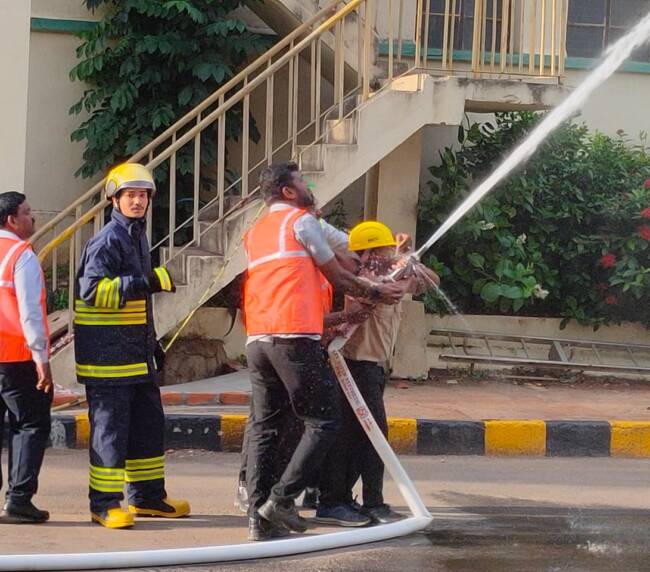






Emergency Preparedness & Evacuation Drill

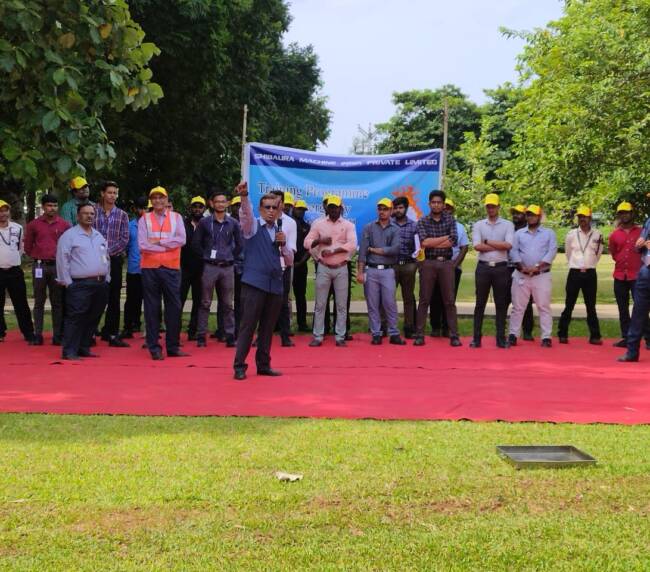










Introduction to Emergency Preparedness
Importance of Emergency Planning & Response
Identifying Workplace Hazards & Risks
Importance of EPP, DRP & BCP
Roles & Responsibilities of Emergency Response Teams
Communication Systems & Emergency Alerts
Evacuation Procedures & Assembly Points
Simulated Drills & Safety Protocols
Handling Medical Emergencies & First Aid Response
Dealing with Natural Disasters (Earthquakes, Floods, Storms)
Chemical Spill & Hazardous Material Emergencie
Active Shooter & Security Threat Preparednes
Emergency Equipment & Supplies
Post-Evacuation Accountability & Incident Reporting
Training, Drills & Continuous Improvement Strategies
Behavioural Based Safety
- Introduction to Behavior-Based Safety (BBS)
- Principles of BBS & Its Importance
- Identifying At-Risk & Safe Behaviors
- Observation & Feedback Process
- Role of Leadership & Management in BBS
- Employee Engagement & Safety Culture
- Incident Prevention Through Behavioral Changes
- Data Collection & Analysis for Safety Improvement
- Continuous Improvement & Performance Monitoring
- Psychological Aspects of Safe Behavior
- Overcoming Resistance to Behavioral Change
- Role of Positive Reinforcement in Safety
- Integrating BBS with Existing Safety Programs
- Measuring the Success of a BBS Program
- Training & Implementation of BBS Programs






Safe Chemical Handling & Spill Management








- Introduction to Chemical Safety
- Understanding Chemical Hazards (Physical, Health, Environmental)
- Safety Data Sheets (SDS) & Labeling Requirements
- Proper Storage & Handling of Chemicals
- Personal Protective Equipment (PPE) for Chemical Handling
- Safe Chemical Transfer & Dispensing Procedures
- Spill Prevention Measures & Containment Strategies
- Emergency Spill Response Procedures
- Chemical Waste Disposal & Environmental Compliance
- First Aid & Medical Response for Chemical Exposure
- Fire & Explosion Hazards of Chemicals
- Ventilation & Engineering Controls for Safe Handling
- Regulatory Compliance & Workplace Safety Standards
- Hazard Communication & Employee Training
- Regular Inspections & Safety Audits
Confined Space Entry & Rescue Techniques
- Definition and Types of Confined Spaces
- Recognizing Hazards in Confined Spaces (Toxic gases, Oxygen depletion, awkward entry. MSD)
- Legal & Regulatory Requirements (OSHA, local standards, best practices)
- Permit-to-Work System for Confined Space Entry
- Atmospheric Testing & Continual Monitoring
- Ventilation Techniques to Ensure Safe Entry
- Isolation of Energy Sources (Lockout/Tagout procedures)
- Entry Procedures & Access Control
- Use of Personal Protective Equipment (PPE)
- Roles & Responsibilities (Authorized Entrants, Attendants, Entry Supervisors)
- Emergency Preparedness & Rescue Planning
- Types of Confined Space Rescue (Self-rescue, Non-entry, Entry-based rescue)
- Rescue Equipment (Tripods, Winches, SCBA, Harnesses, etc.)
- Communication Systems & Signaling Methods
- Training & Certification Requirements for Entrants and Rescuers
- Post-Incident Review & Continuous Improvement


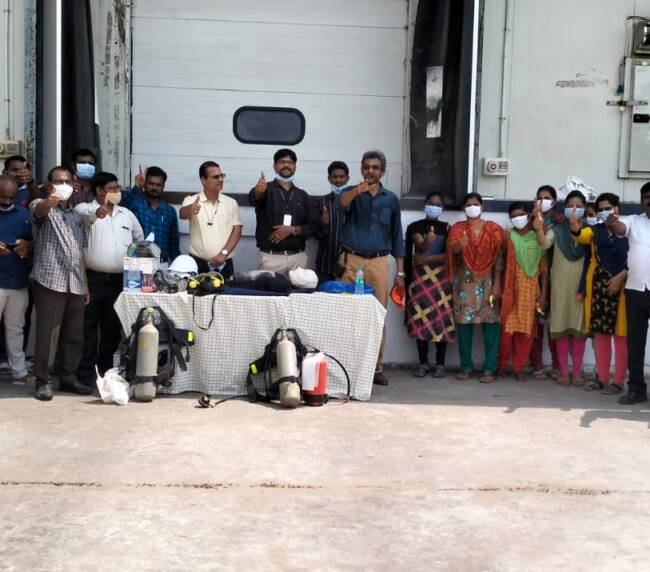

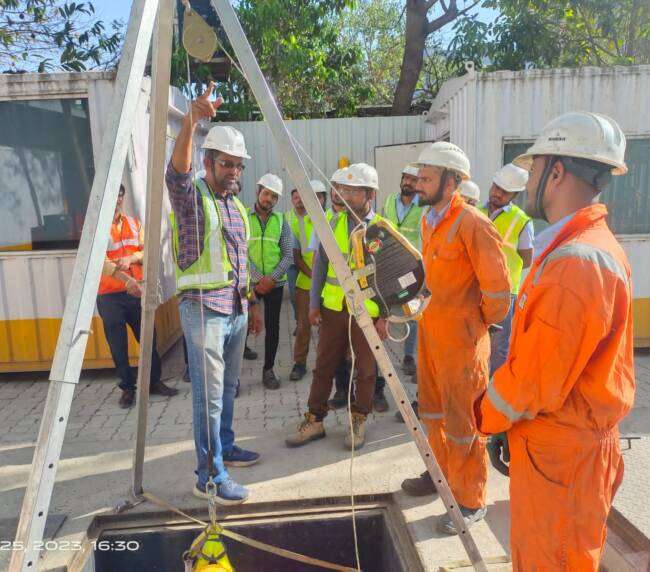

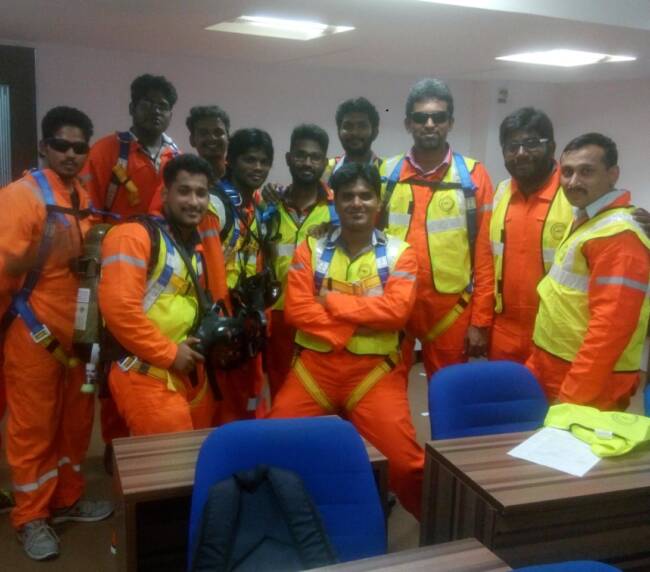
Work at Height & Rescue Method
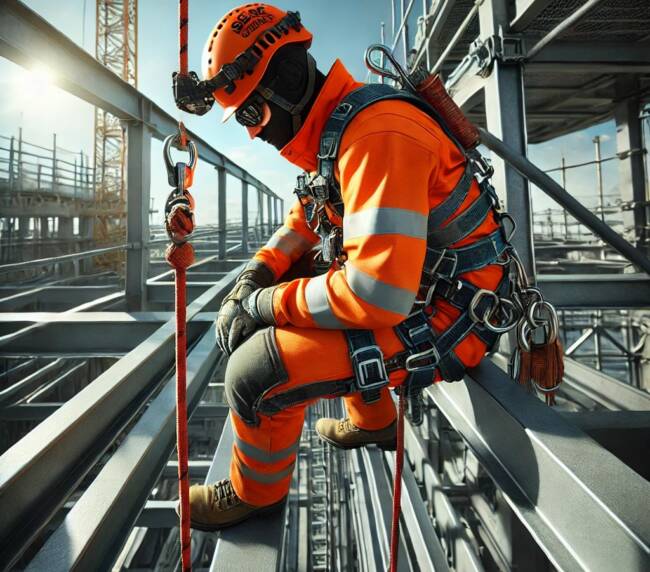
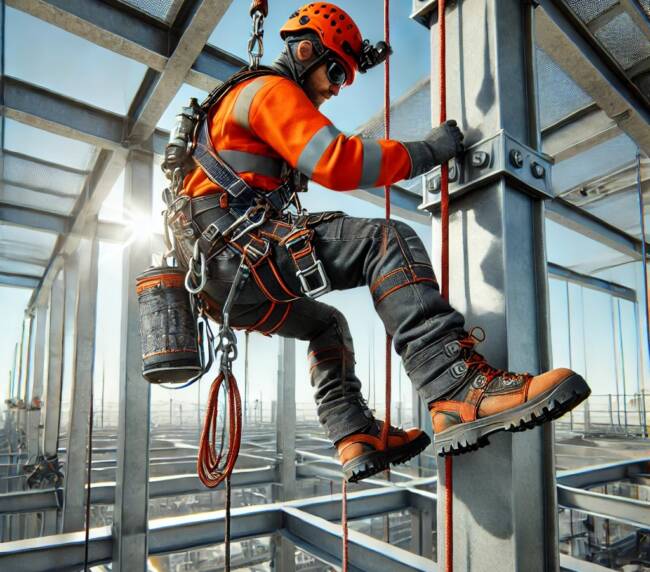



- Definition and Scope of Work at Height
- Common Hazards and Risks Associated with Work at Height
- Applicable Laws & Regulations (e.g., OSHA, local standards)
- Hierarchy of Fall Protection (Elimination, Guardrails, PPE, etc.)
- Risk Assessment and Safe Work Planning
- Selection and Use of Fall Protection Equipment (Harnesses, Lanyards, Anchors)
- Scaffold, Ladder, and Mobile Access Equipment Safety
- Roof Work, Fragile Surfaces & Edge Protection
- Permit-to-Work System for Work at Height
- Inspection and Maintenance of Equipment
- Competency and Training Requirements for Workers
- Weather and Environmental Considerations
- Emergency Preparedness for Work at Height Incidents
- Rescue Techniques (Self-rescue, Assisted Rescue, Suspension Trauma Management)
- Rescue Equipment and Communication Systems
Lifting Operation + Rigging & Slinging
- Introduction to Lifting Operations
- Types of Lifting Equipment
- Legal & Regulatory Requirements for Lifting
- Risk Assessment & Hazard Identification
- Load Capacity & Weight Calculations
- Safe Lifting Techniques & Procedures
- Inspection & Maintenance of Lifting Equipment
- Roles & Responsibilities of Personnel (Riggers, Signallers, Operators)
- Lifting Plan & Permit-to-Work System
- Communication & Hand Signals for Safe Lifting
- Environmental Considerations (Wind, Ground Conditions, etc.)
- Emergency Procedures for Lifting Operations
- Use of Personal Protective Equipment (PPE)
- Common Causes of Lifting Accidents & Prevention
- Training & Certification for Lifting Operations


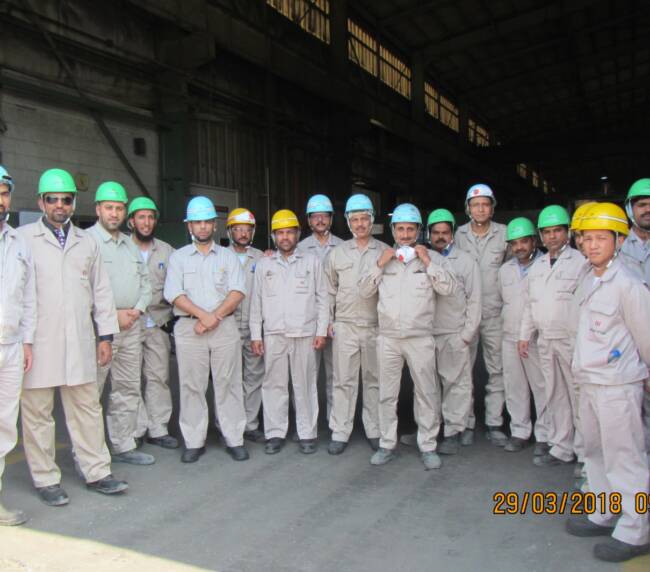

Accident Investigation & Root Cause Analysis



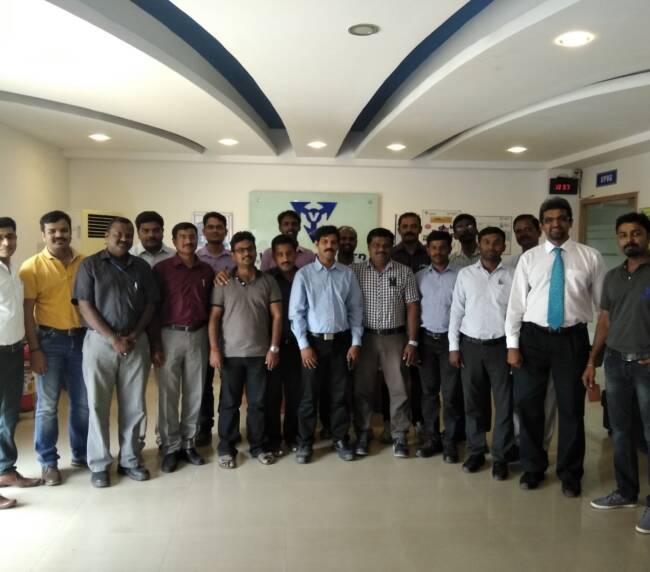

- Introduction to Accident Investigation
- Importance of Root Cause Analysis
- Types of Workplace Accidents – different categories
- Roles & Responsibilities in an Investigation
- Accident Reporting Procedures
- Securing the Accident Scene
- Collecting Evidence & Documentation
- Effective Witness Interviewing techniques
- Techniques for Root Cause Analysis | GAIP analysis
- The 5 Whys Method
- Fishbone Diagram (Ishikawa) Approach
- Human Factors & Behavioral Analysis
- Developing Corrective & Preventive Actions
- Report Writing & Communication of Findings
- Monitoring & Continual Improvement
First Aid & Handling Medical Emergencies
- Introduction to First Aid and Basic Life Support (BLS)
- Importance of First Aid in Emergency Situations
- Understanding the ABCs of Life Support (Airway, Breathing, Circulation)
- CPR (Cardiopulmonary Resuscitation) Techniques for Adults, Children, and Infants
- Use of Automated External Defibrillator (AED) and Its Importance
- Recognizing and Managing Choking Emergencies
- Handling Unconsciousness and Recovery Position
- First Aid for Bleeding and Wound Management
- Managing Burns and Scalds: First Aid Measures
- Fractures, Sprains, and Dislocations: Stabilization Techniques
- First Aid for Heart Attacks and Stroke Recognition
- Managing Shock and Unresponsive Victims
- Handling Poisoning and Toxic Substance Exposure
- First Aid for Seizures, Fainting, and Heat-Related Emergencies
- Importance of Staying Calm and Seeking Professional Medical Help




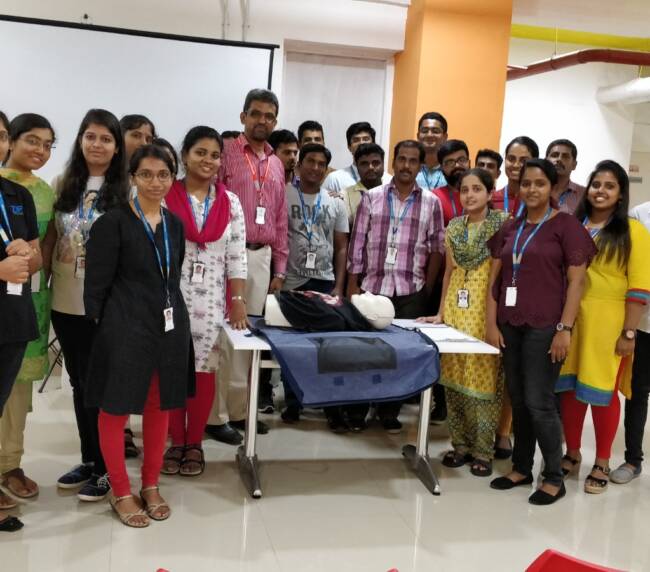



Ergonomics + Manual & Material Handling




- Introduction to Ergonomics
- Importance of Ergonomics in Workplace Safety
- Common Ergonomic Hazards & Risk Factors
- Proper Posture & Body Mechanics
- Ergonomic Workstation Setup (Chairs, Desks, Screens, Keyboards)
- Manual Handling & Lifting Ergonomics
- Preventing Musculoskeletal Disorders (MSDs)
- Ergonomics in Office Work & Remote Workspaces
- Industrial & Manufacturing Ergonomics
- Use of Assistive Devices & Tools for Ergonomic Safety
- Reducing Repetitive Strain Injuries (RSIs)
- Role of Breaks & Stretching Exercises
- Ergonomics in Vehicle & Driving Safety
- Workplace Ergonomic Assessments & Adjustments
- Training & Awareness for Ergonomic Best Practices
Hazard Identification & Risk Assessment- HIRA
- Introduction to Hazard Identification & Risk Assessment (HIRA)
- Understanding Workplace Hazards: Types and Categories
- Importance of Hazard Identification in Workplace Safety
- Common Hazard Identification Techniques (JSA, HAZOP, FMEA, etc.)
- Steps in Conducting a Risk Assessment
- Risk Matrix: Evaluating Likelihood and Severity
- Control Measures: Hierarchy of Hazard Controls
- Workplace Inspections and Safety Audits
- Identifying Behavioral and Ergonomic Hazards
- Reporting and Documenting Hazards Effectively
- Legal and Regulatory Requirements for Risk Assessment
- Incident Investigation and Root Cause Analysis
- Role of Employees in Hazard Identification & Risk Reduction
- Continuous Monitoring and Improvement in Risk Management
- Building a Proactive Safety Culture through HIRA Practices
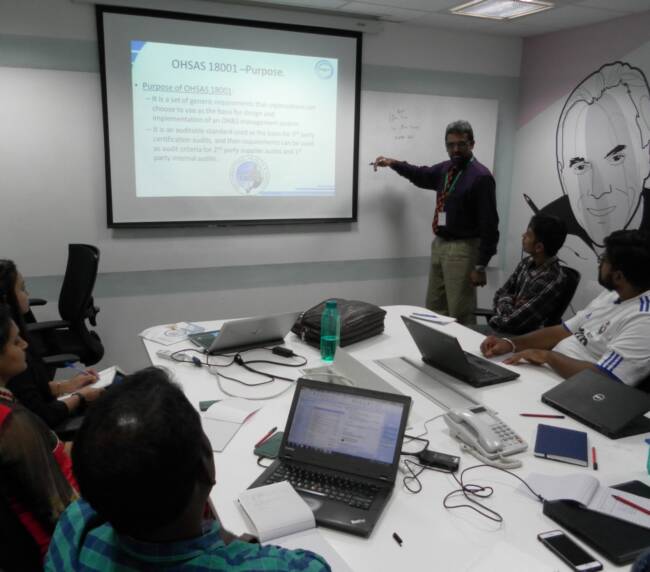





Motivational training for Support Staff & Facility management Teams to Prioritize Safety and Excellence





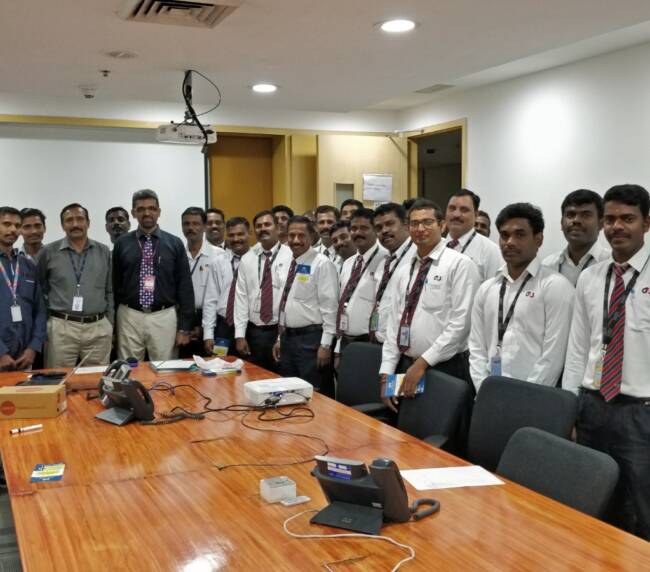


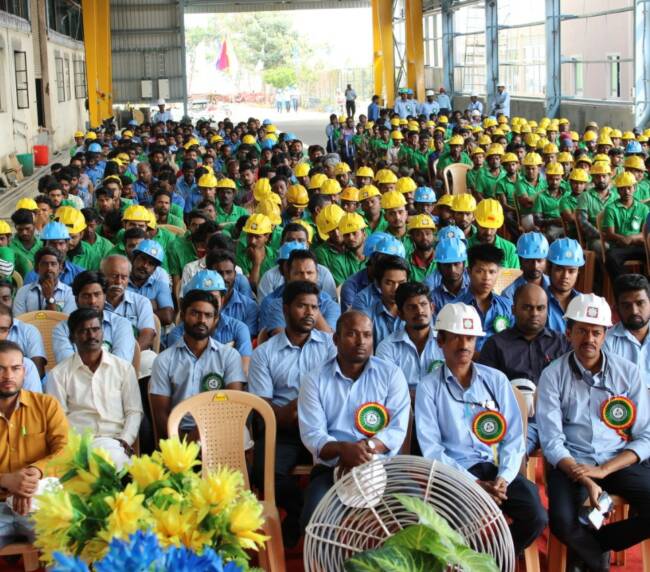
- Understanding the Importance of Workplace Safety
- Creating a Safety-First Mindset
- Role of Support Staff & Facility Teams in Safety
- Identifying and Reporting Hazards
- Emergency Preparedness & Response
- Safe Handling of Equipment & Tools
- Workplace Hygiene & Sanitation
- The Power of Teamwork in Safety
- Stress Management & Well-being
- Effective Communication in Safety
- Dealing with Unsafe Behaviors & Situations
- Developing Leadership in Safety
- Recognizing and Rewarding Safety Efforts
- Continuous Learning & Improvement
- Building a Culture of Safety Excellence

